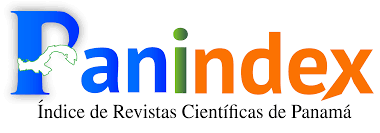Esta obra está bajo licencia internacional https://creativecommons.org/licenses/by-nc-sa/4.0/deed.es
La revista (y sus contenidos) emplean las licencias Creative Commons, específicamente la del tipo CC BY NC SA 4.0, la cual establece que “el beneficiario de la licencia tiene el derecho de copiar, distribuir, exhibir y representar la obra y hacer obras derivadas siempre y cuando reconozca y cite la obra de la forma especificada por el autor o el licenciante”. La licencia del tipo CC BY NC SA 4.0 contempla tres categorías,
- Atribución.
- No Comercialización de la obra.
- Compartir igual
Los lectores son libres de:
- Compartir — copiar y redistribuir el material en cualquier medio o formato
- Adaptar — remezclar, transformar y construir a partir del materialLa licenciante no puede revocar estas libertades en tanto usted siga los términos de la licencia
- Siempre y cuando se respeten y contemplen la atribución de autoría y la no comercialización del material.
Abstract
The purpose of this paper is to refute the myth that until now has fallen on gamers in the organizational context in Puerto Rico, recognizing the new realities of the labor market in the face of globalization and the digital age. From a sophist perspective, the challenges that the gamer faces in his work are approached with a complex and even universal approach. It is an article of documentary type, with bibliographic design, where the technique of digital ethnographic observation is applied for the analysis and interpretation of contents. After the discussion of the results achieved, it was possible to analyze the role played by the industrial /organizational psychologist, in spaces where the gamer community intervenes, being able to establish the scope of the prerogatives that this phenomenon offers. Finally, it could be concluded that the gamer represents a new archetype of human behavior, among those that enrich processes with place in the organizational and industrial context.
Keywords:
References
Cano, P. (01 de Septiembre de 2016). Los beneficios de ser gamer. [Mensaje en un blog]. Recuperado de: https://juegosadn.eleconomista.es/los-beneficios-de-ser-gamer-ar-1686/
Caro, L. (2015). Relaciones e interacciones parasociales en redes sociales digitales. Una revisión conceptual. Revista Icono. 13(14). 23-47.Doi:https://icono14.net/ojs/index.php/icono14/article/view/853
Carstens. A. y Beck, J. (2005). Get ready for the gamer generation. TechTrends. Liking Research and Practice to Improve learning. Recuperado de: https://eric.ed.gov/?id=EJ737672
Cirino, G. (2000). Pasado, presente y futuro de la Psicología Industrial-Organizacional en Puerto Rico. Interamerican Journal of Psychology. 34(002). 119-126.
Everett, A. (2011). Benefits and challenges of fun in the workplace. Library Leadership & Management. 25(1). 1-10.
Feldman, R. (2007). Desarrollo psicológico a través de la vida. México. Pearson educación. Recuperado de: https://www.academia.edu/36209711/Desarrollo_Psicologico_a_traves_de_la_vida
Franceschini, S., Gori S., Ruffino, M., Viola, S., Molteni, M. & Facoetti, A. (2013). Action video games make dyslexic children read better. Current Biology. Doi: http://dx.doi.org/10.1016/j.cub.2013.01.044
Gee, J. (2003). What video games have to teach us about learning and literacy? USA. Palgrave Macmillan. Recuperado de: https://www.amazon.com/exec/obidos/ASIN/1403961697/qid=1062706188/sr=21/ref=sr_2_1/002-5282466-9651248
Gee, J. P. (2007). What video games do?. USA. Palgrave Macmillan.
Gértrudix, F., Durán, J., Garmonal, R., Galvéz, M. y García, F. (2008). Una taxonomía del término nativo digital. Nuevas formas de relación y de comunicación. Recuperado de: https://www.google.com/url?sa=t&source=web&rct=j&url=http://www.gabinetecomunicacionyeducacion.com/sites/default/files/field/adjuntos/una_taxonomia_del_termino_nativo_digital._nuevas_formas_de_relacion_y_de_comunicacion.pdf&ved=2ahUKEwjk-dv3sJ3lAhUNvlkKHc4JAgMQFjAAegQIBBAB&usg=AOvVaw0-6kHBAensfKa3daEiQar0
Hernández, R., Fernández, C. y Baptista, P. (2006). Metodología de la investigación. México. Editorial McGrawHill.
Juul, J. (2010). A casual revolution reinventing with the games and their players. USA. The MIT Press. Recuperado de: https://www.google.com/url?sa=t&source=web&rct=j&url=https://www.jesperjuul.net/casualrevolution/casual_revolution_chapter1.pdf&ved=2ahUKEwitk5iHsp3lAhVmvFkKHe_UDfgQFjAAegQIARAB&usg=AOvVaw3NYznHzZ6Pdpt80brlzYeZ
Linne, J. (2014). Dos generaciones de nativos digitales. Intercom- RBCC. 37(2). 203 - 221. Recuperado de: https://www.google.com/url?sa=t&source=web&rct=j&url=http://www.scielo.br/pdf/interc/v37n2/1809-5844-interc-37-02-0203.pdf&ved=2ahUKEwj_87Cls53lAhXL1VkKHeUBAtIQFjAAegQIAhAB&usg=AOvVaw2N93xdFW2RNoMDwuSrbSMv
Mäyrä, F. (2010). Gaming culture at the boundaries of play. The International Journal of Computer Game Research. (10)1. Recuperado de: http://gamestudies.org/1001/articles/mayra
Mojica. K. (2015). Identidad profesional de la psicología industrial organizacional en Puerto Rico y el conocimiento de las competencias del psicólogo industrial organizacional y el profesional de recursos humanos. Catálogo de Investigaciones 2014-2015.
Patenaude, M. (2014). University Rochester. Playing Action Video Games Can Boost Learning. Recuperado de: https://www.rochester.edu/newscenter/playing-action-video-games-can-boost-learning-78452/
Pérez, O. (2011). Del Ajedrez a Star Craft: Análisis Comparativo de Juegos Tradicionales y Videojuegos . Revista Comunicar. 38(19). 121 – 129. Doi: http://dx.doi.org/10.3916/C38-2012-03-03
Rodríguez, A. (2016). Game on Puerto Rico: La cultura gamer Boricua. (Primera edición). Puerto Rico. Editorial Igualdad.
Romero, M & Turpo, O. (2012). Serious Games para el desarrollo de las competencias del siglo XXI. Revista de educación a distancia. (34). 1-22.
Ruiz, C. (13 de noviembre de 2013). Jugar Super Mario 64 puede estimular el crecimiento de ciertas regiones cerebrales. La Nación. Recuperado de: https://www.google.com/amp/s/www.nacion.com/tecnologia/jugar-super-mario-64-puede-estimular-el-crecimiento-de-ciertas-regiones-cerebrales/RDIMD34AQVGM3KZZMJCJ66P5OI/story/%3foutputType=amp-type
Sabino, C. (2006). Los caminos de la ciencia: una introducción al método científico. Buenos Aires. Argentina. Lumen Humanitas.
Sedeño, A. (2009). Videojuegos como dispositivos culturales: Las competencias espaciales en educación. Revista Comunicar. 34(17). 183- 189. Doi: DOI:10.3916/C34-2010-03-018
Sierra, R. (2010). El método investigativo. Caracas. Venezuela. Editorial Suramérica.
Silverman, R. (10 de octubre de 2011). Latest Game Theory: Mixing work and play. The Wall Street Journal. Recuperado de: https://www.wsj.com/articles/SB10001424052970204294504576615371783795248
Wood, R., Griffiths, M., Chappell, D., y Davies, M. (2004). The Structural Characteristics of Video Games: A Psycho-Structural Analysis. CyberPsychology & Behavior. 7(1). 1-10.
Wolf, M. & Perron, B. (2005). Introducción a la teoría del videojuego. Formats: Revista de Comunicación Audiovisual. 1-27. Recuperado de: https://www.google.com/url?sa=t&source=web&rct=j&url=https://www.raco.cat/index.php/Formats/article/download/257329/344420&ved=2ahUKEwih_q_xtp3lAhUQy1kKHSGwAfwQFjAAegQIBBAB&usg=AOvVaw1ZDapHQuJogPW2FCc8FzfA













